Huey Hogs: The World’s First Helicopter Gunship
March 18th, 2023
6 minute read
As with many military innovations, the Huey Hog came to be during war. In Vietnam, U.S. forces were using the UH-1 Iroquois for a variety of missions. It didn’t take long for the troops to request a dedicated attack platform. Until it arrived, UH-1 variants acted as gunships. They were known as Huey Hogs.
The UH-1 Huey helicopter first deployed to Vietnam as a medevac platform in 1962. It soon became obvious that this versatile aircraft was capable of so much more than just extracting wounded troops from the combat zone. More than any other single war machine of its era, the Huey revolutionized modern combat.
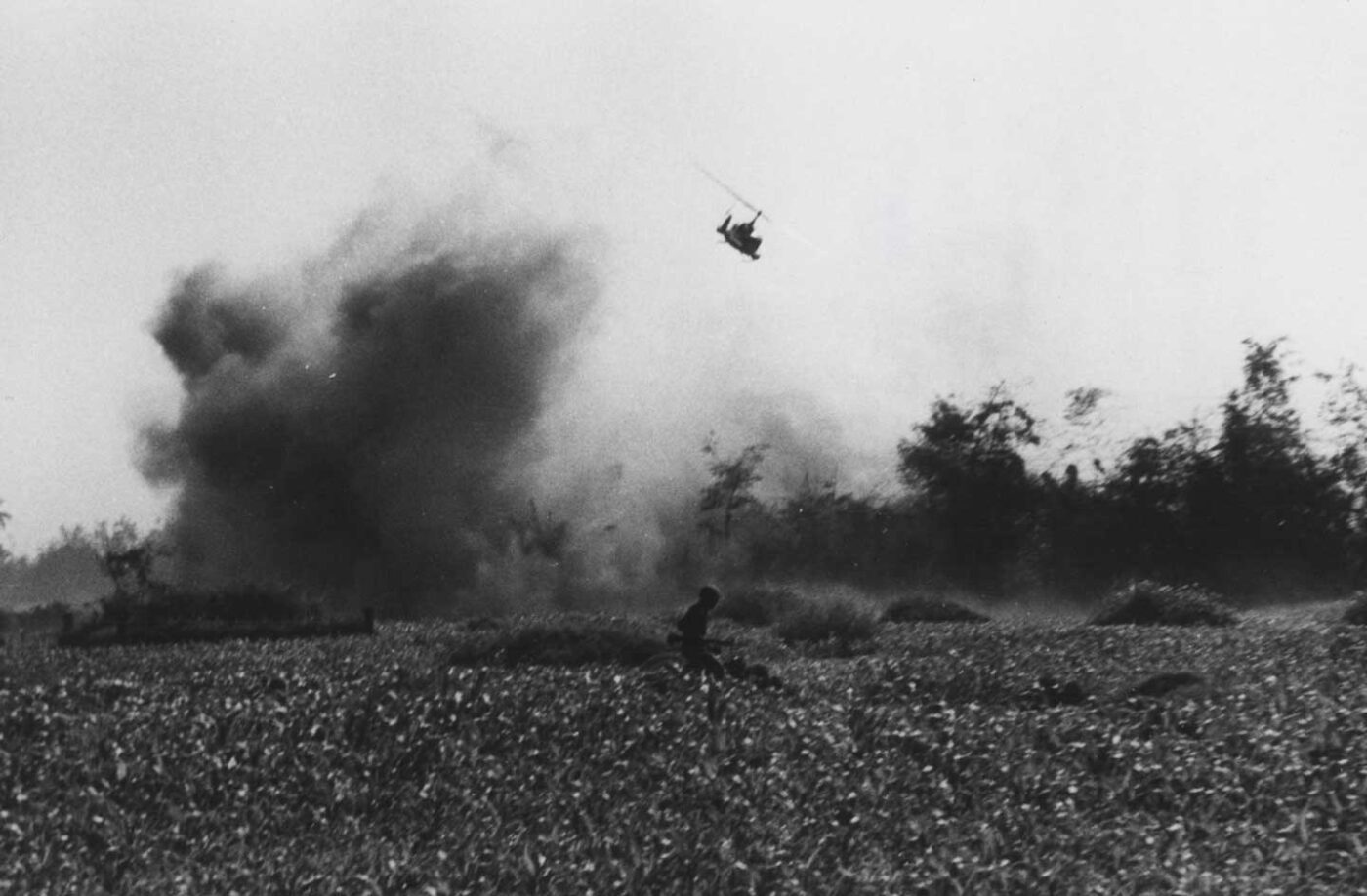
Modern war turns on a variety of attributes: firepower, intelligence and doctrine are indeed undeniably important. However, arguably the most critical aspect of modern battle calculus is mobility. In 1784, Ben Franklin opined, “And where is the Prince who can afford so to cover his Country with Troops for its Defense, as that Ten Thousand Men descending from the Clouds, might not in many Places do an infinite deal of Mischief, before a Force could be brought together to repel them?” That guy was indeed a visionary. More so than cumbersome airborne forces delivered via parachute, the Huey helicopter made old Ben’s vision a reality.
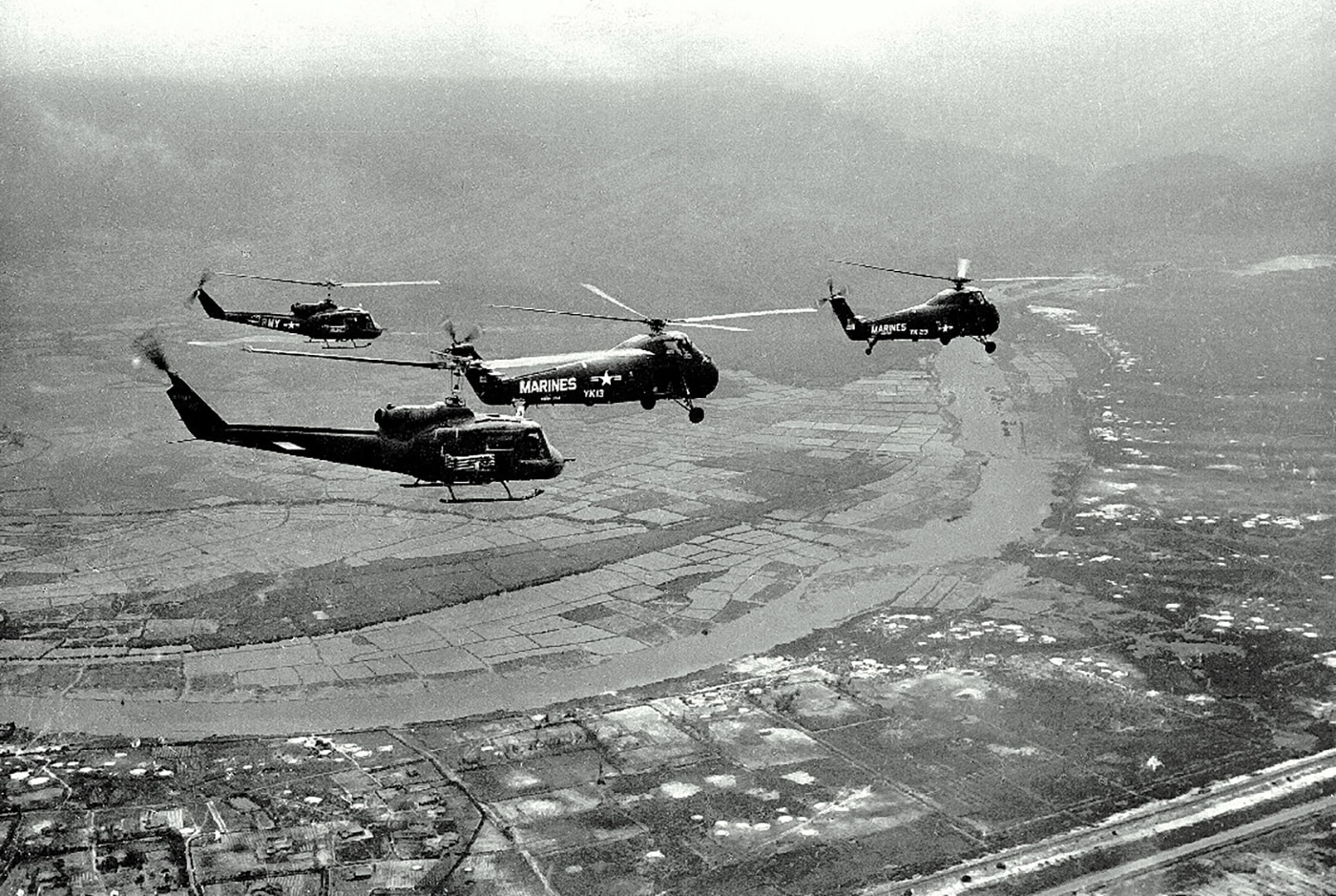
Once somebody realized you could pack troops into utility helicopters and land them behind an entrenched enemy force, warfare would never be the same. However, it was simultaneously appreciated that those same troops would be exceptionally vulnerable during the insertion phase of the operation. Fast mover jets could bring the pain on a massive scale, but they lacked the requisite precision to protect a complex combat helicopter assault. To help suppress enemy forces during this most critical time, a handful of U.S. Army visionaries created the world’s first operational helicopter gunships. They used UH-1 Huey helicopters as a foundation.
Details
Most dedicated Huey gunships were either B, C or M-model aircraft. These machines sported the early stubby fuselage architecture. D and H-models had a stretched fuselage optimized for carrying troops and cargo. The primary differences among the three variants were in the engines and powertrains. C and M-model Hueys featured a wide-chord rotor system and redesigned tail boom to help manage the extra weight of the ordnance they carried.
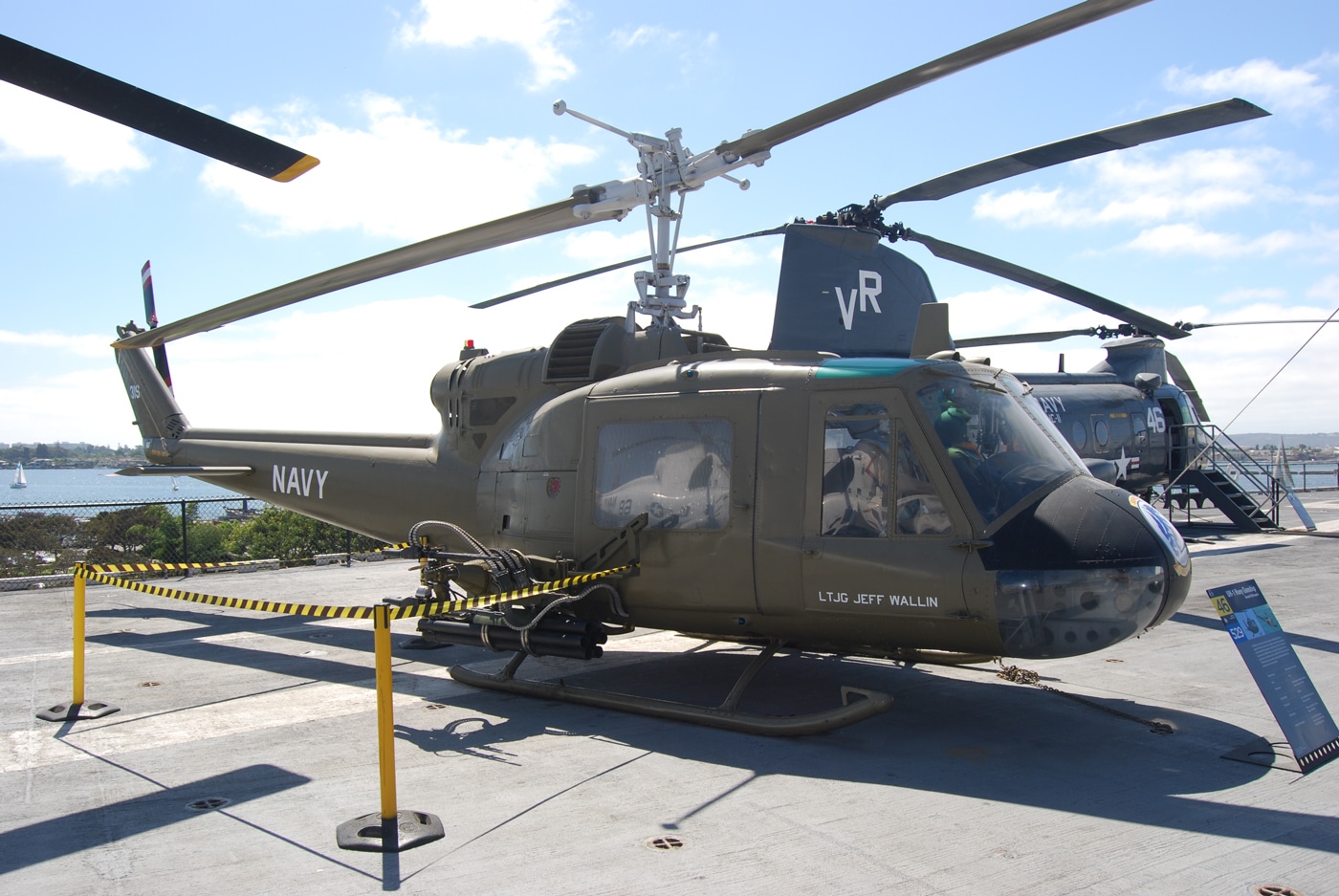
In Vietnam, these heavily armed aircraft were called Hogs. Of the 16,000 Hueys produced since 1956, roughly 1,000 of them were used as gunships. These early pioneers figured it out as they went along, so there was a great deal of variation concerning weapons, equipment and fire-control systems. However, the archetype was the UH-1M Heavy Scout.
The UH-1 M-model Heavy Scout sported four 7.62x51mm M-60CA1 machine guns mounted in pairs on each side of the aircraft in an XM16 mount. These guns were fired remotely via solenoids and pivoted to allow the pilot to control elevation. The guns fed from big ammo cans mounted in the crew compartment via flexible ammo chutes.
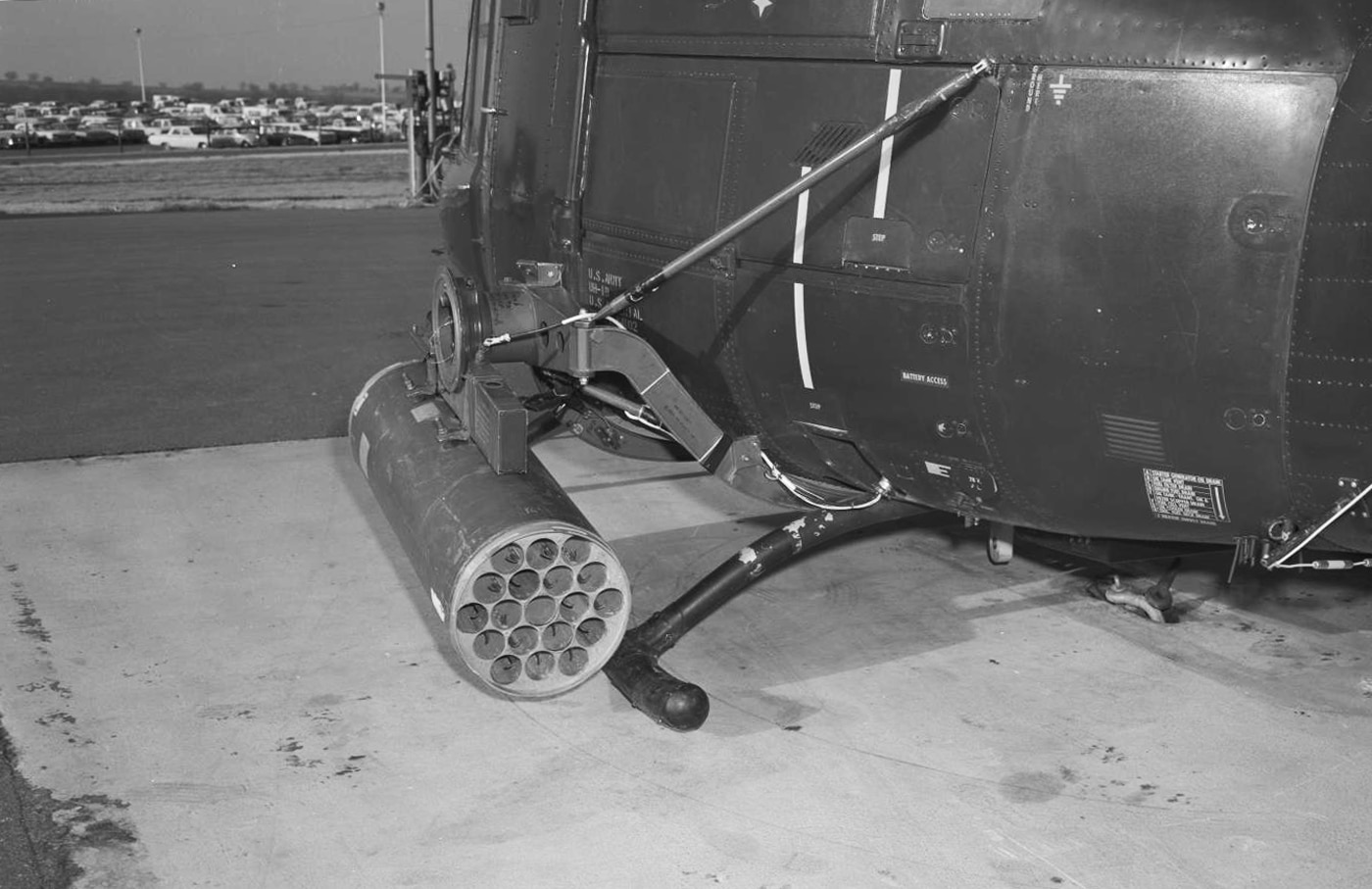
Alongside these guns was typically one M157 seven-shot rocket pod on each side. There were nineteen-shot pods available as well, but these early Hueys typically lacked the horsepower to lift them. The 2.75-inch FFAR (folding fin aerial rocket) was originally called the “Mighty Mouse.” These unguided rockets could carry a variety of warheads.
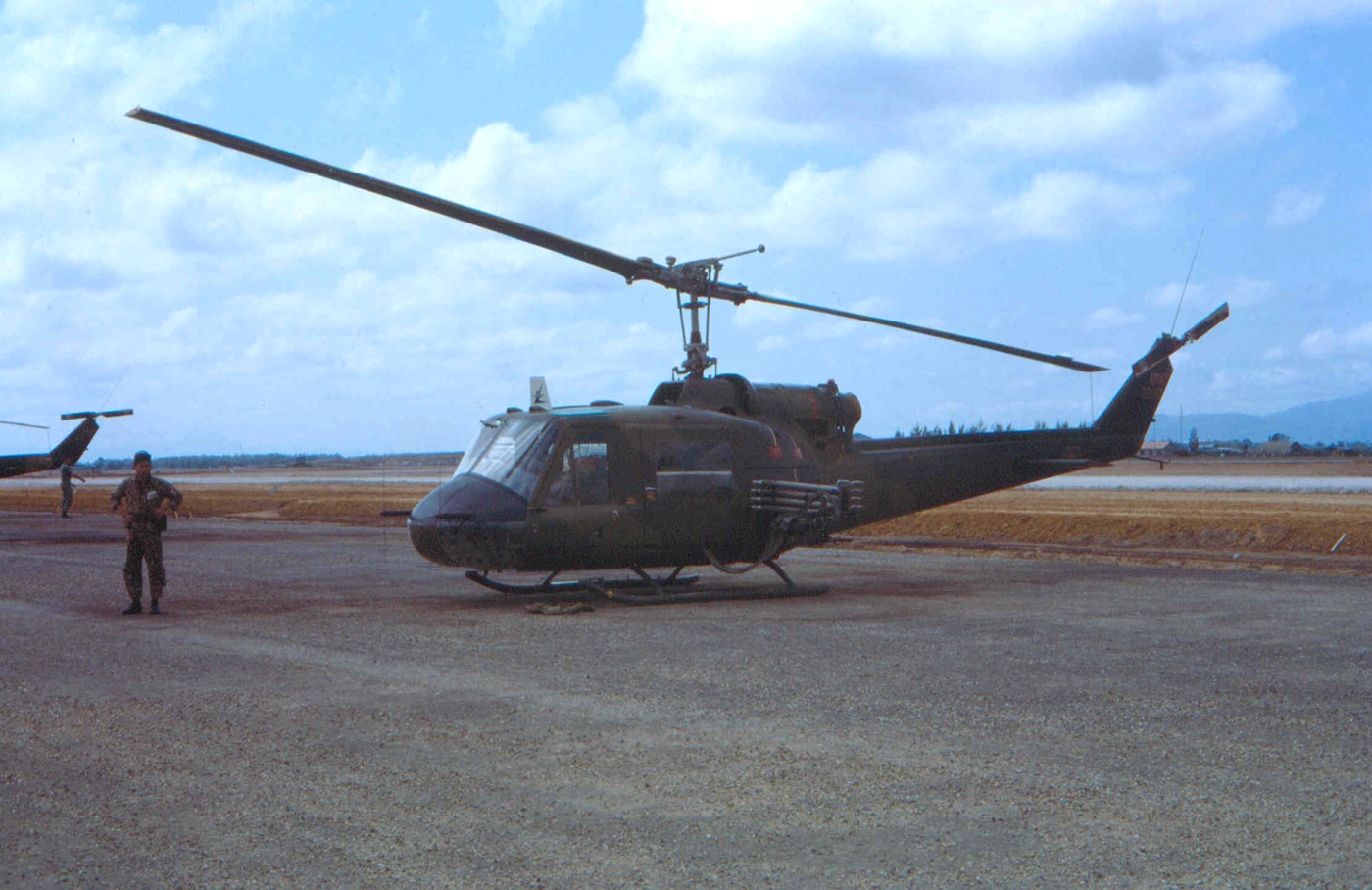
A typical 2.75-inch rocket was four feet long, weighed about 20 pounds, and packed a roughly 6-pound HE warhead. These rockets could also carry a white phosphorus payload for incendiary or marking purposes. Anti-tank variants had both high-explosive antitank and high-explosive dual-purpose effects. Additionally, these rockets could fire flechette warheads that packed thousands of little pressed steel darts.
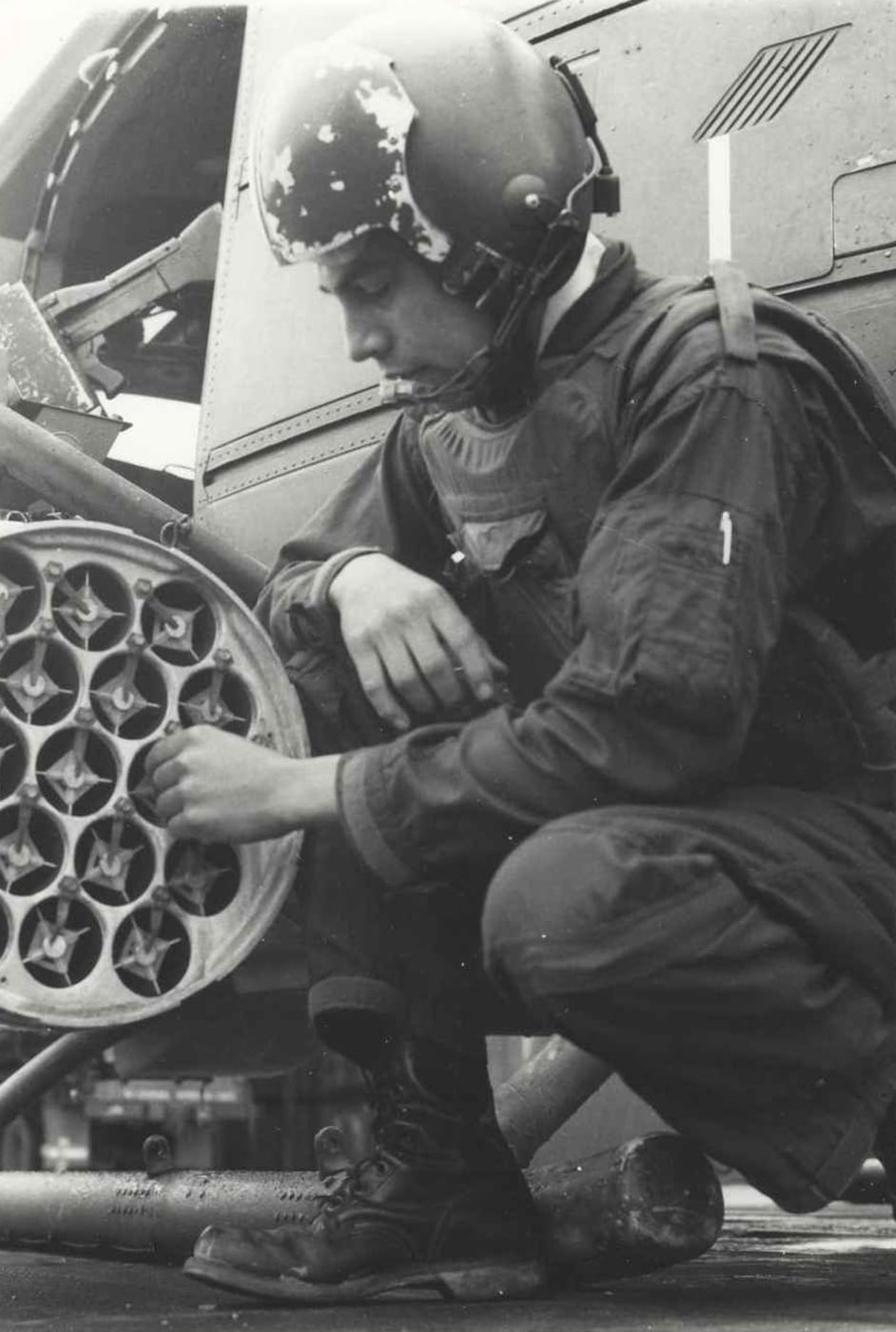
Flechettes were called nails in military parlance, and they were extra-special nasty. The WDU-4/A warheads that carried them each packed 2,200 darts that weighed 20 grains apiece. These rockets could be programmed to fly a certain distance and then explode, sending a dense cloud of pointy steel chaos to saturate a target area. When the flechette rounds detonated they gave off a distinctive puff of red smoke.
The Heavy Hog also frequently mounted a 40mm automatic grenade launcher in the nose. The Mini-Hog sported an XM21 armament subsystem. This loadout included the same seven-shot rocket pods as the XM16 but substituted a single M134 minigun on each side in place of the paired M-60s. Each of these armament subsystems rode on the XM-156 multi-armament pylon mount. This mount was slaved to an XM-60 reflex sight that allowed the pilot in command to direct and elevate the weapons in flight. This sight rode on a folding mount that collapsed out of the way when not in use.
With a typical cyclic rate of around 4,000 rounds per minute apiece, the M134 minigun consumed ammunition at a simply breathtaking clip. As a result, each gun was fed by two rows of three ammo boxes interconnected and routed through holes in the cabin floor. Electric motors built into the ammunition boxes helped pull the heavy belts along so that the guns could feed them reliably.
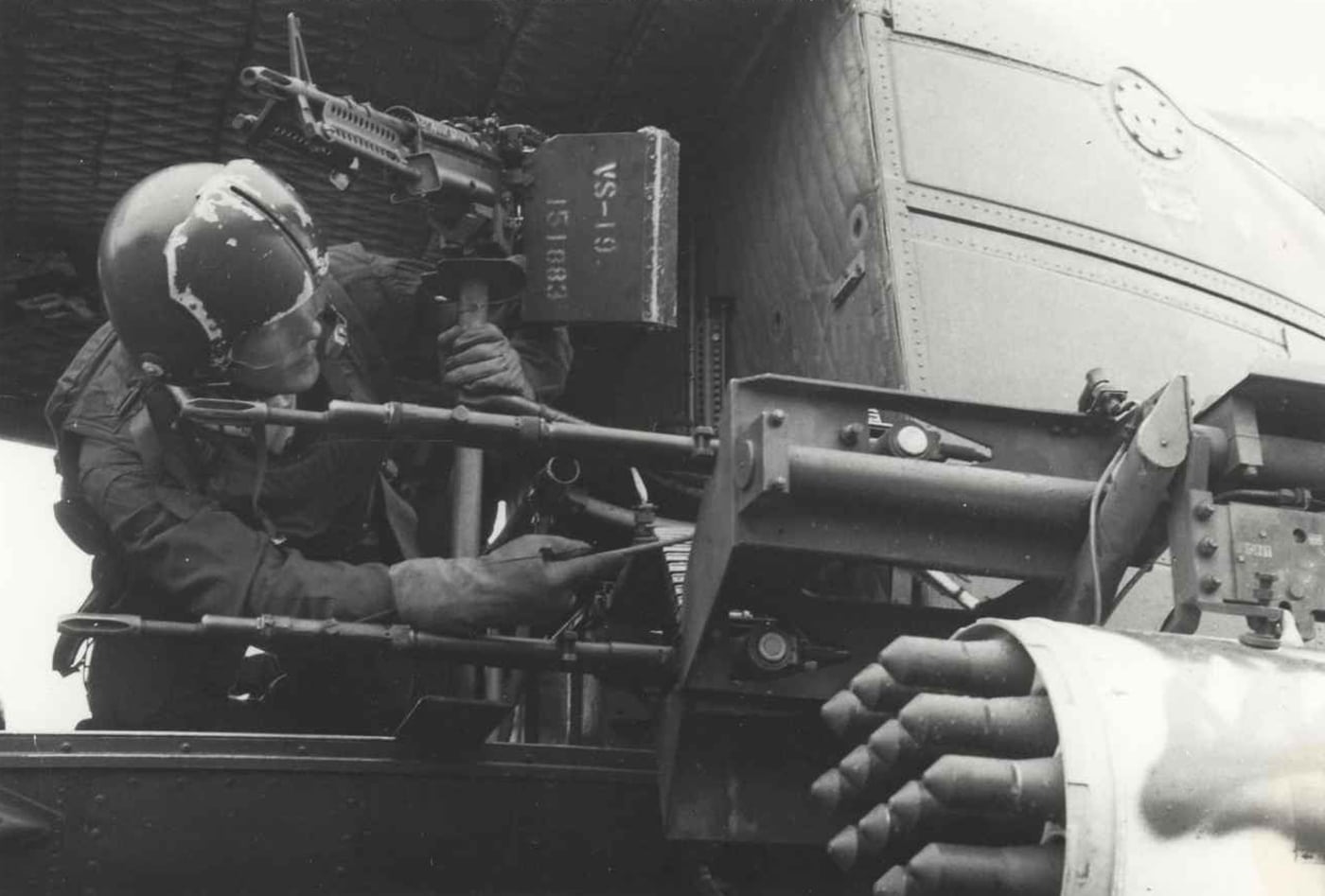
Dependent upon the flying conditions, these heavily-armed gunships might also include door gunners each wielding an M-60 machinegun on a bungee cord or pintle mount. Sometimes these were standard ground -60s. However, a lot of aerial gunners modified their guns with chopped barrels or ancillary forward handgrips to enhance control. These grips were frequently improvised out of a standard M-60 fire control group secured in place on the forearm with pipe clamps. Mounting a C-ration can to the left side of the feed tray would improve reliability as well.
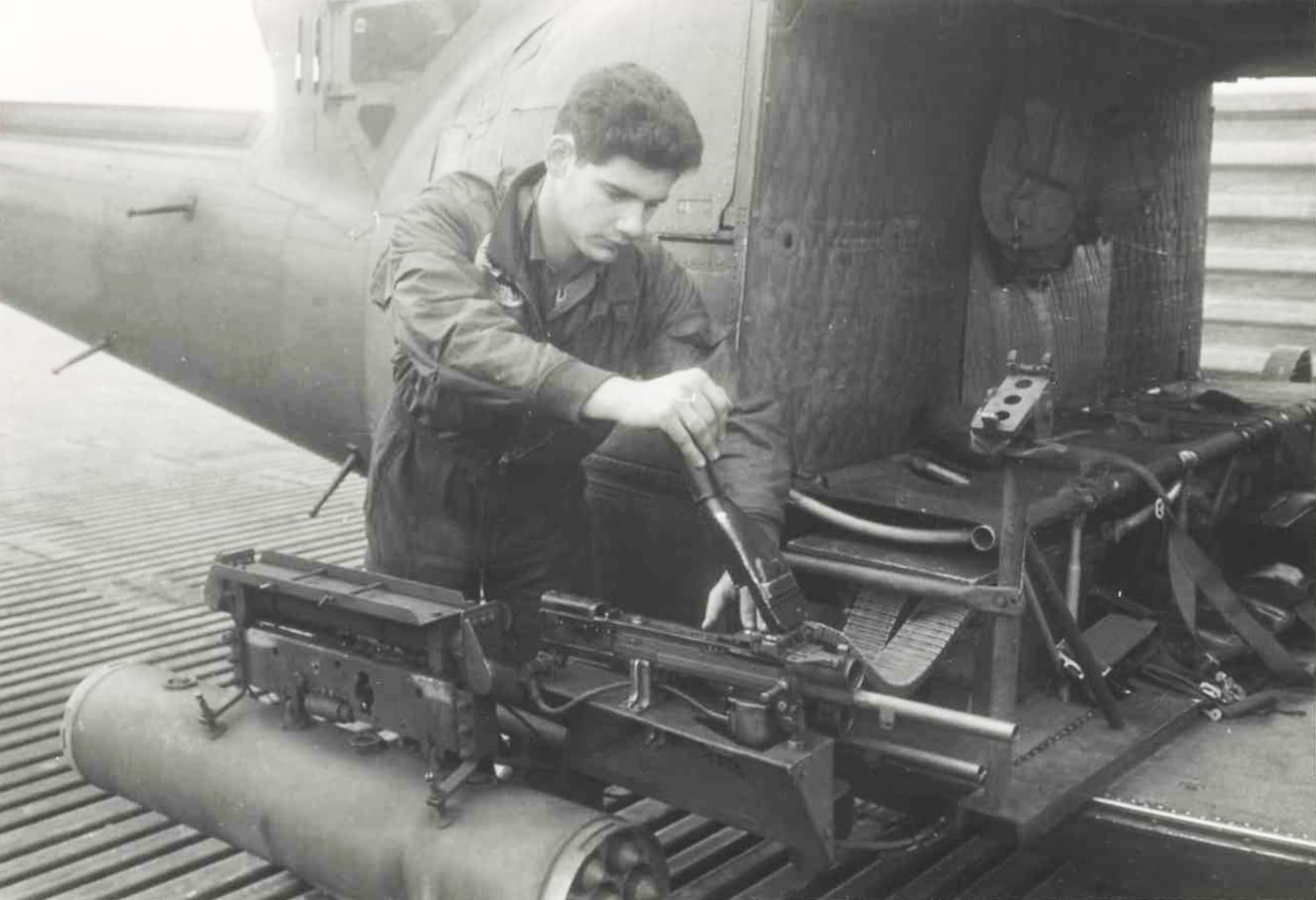
The latest M-model gunships used the same 1,400-shaft horsepower Lycoming engine of the larger H-model Hueys and had the same 9,500-pound max gross weight. These aircraft were at times fitted with .50-caliber guns and crazy-powerful spotlights for night operations. All of this, while effective, simply served as a stepping stone to better things to come.
Ruminations
Lessons learned with the development of the B, C and M-model Huey gunships were folded into the AH-1G Cobra, the world’s first effective mass-produced dedicated attack helicopter. Once rendered obsolete, these old Huey gunships were seconded to National Guard units, gifted to civilian government agencies, or simply scrapped. When I was training at Hanchey Army Heliport at Fort Rucker back in the 1990s, there were a couple of these old M-model Hueys on the flight line. I have no idea what they were used for.
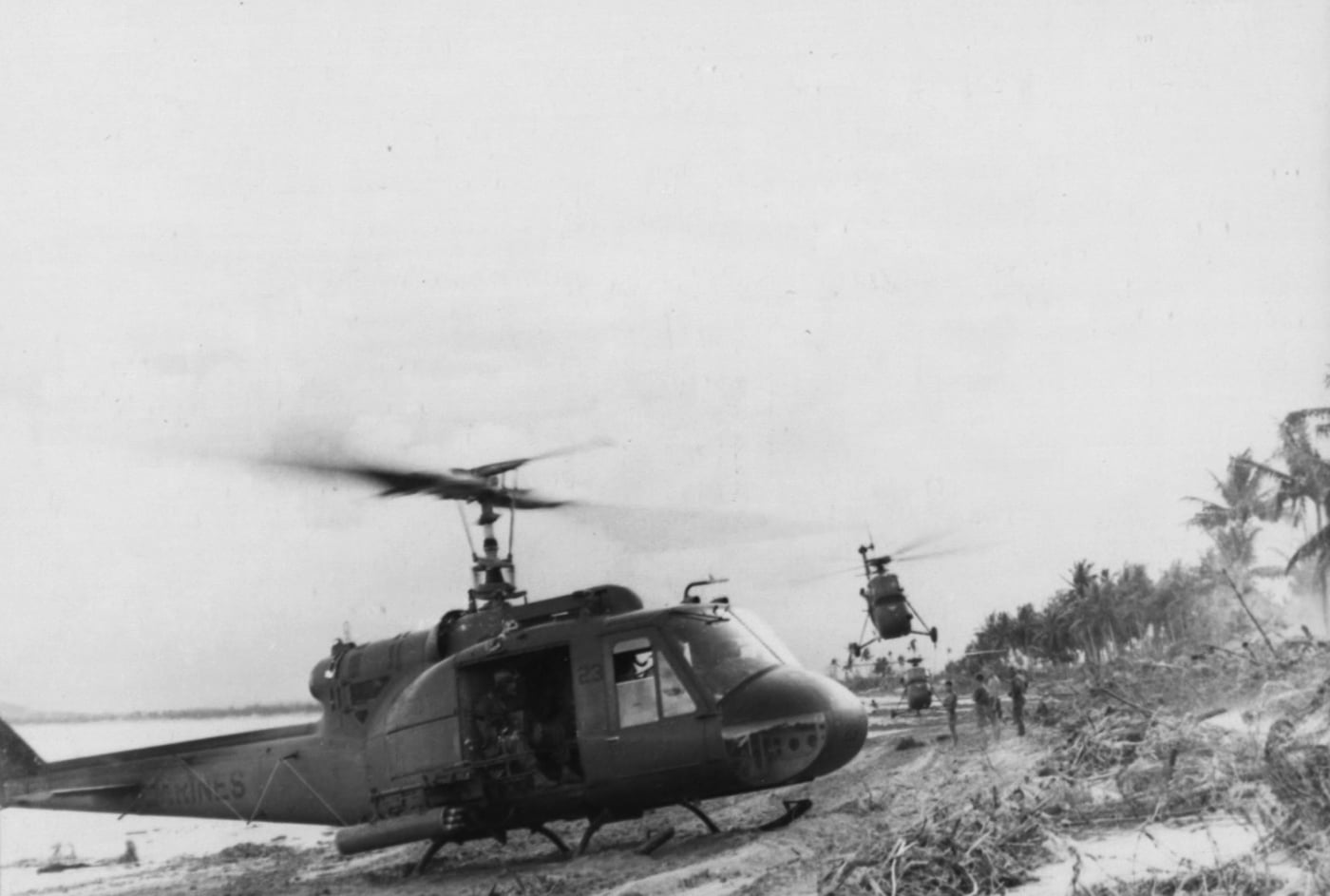
Huey gunships have seen action in brushfire wars worldwide, particularly in El Salvador back in the 1980s. Powerful, effective, vicious and mean, those early Huey gunships helped write the book on attack helicopter operations. For American troops in contact in Vietnam, the arrival of the Hogs quite frequently carried the day.
Editor’s Note: Please be sure to check out The Armory Life Forum, where you can comment about our daily articles, as well as just talk guns and gear. Click the “Go To Forum Thread” link below to jump in!
Join the Discussion
Continue Reading
Did you enjoy this article?

 693
693







